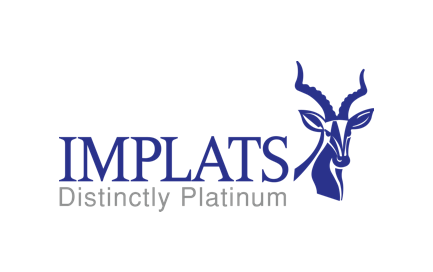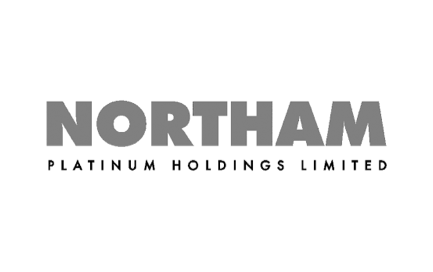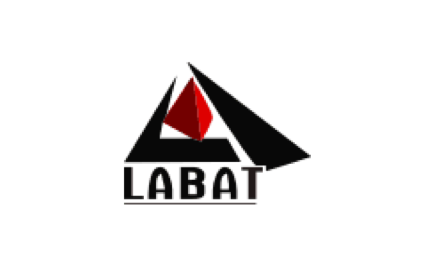Attacq maintains full year earnings guidance (JSE: ATT)
The full year growth rate will be far more modest than interims
Property fund Attacq has announced growth in distributable income per share of 27.9% for the six months ended December 2022. This has been driven by rental income from newly completed developments as well as the existing portfolio, alongside lower finance costs.
Guidance for the full year ended June 2023 has been left unchanged at between 8% and 10% growth, with a dividend payout ratio of 80%.
When the detailed interim results are announced, Attacq will also confirm the quantum of the dividend for the interim period.
Capitec’s growth rate looks a little bit…normal? (JSE: CPI)
At this valuation multiple, I’m not sure this growth rate will cut it
If Capitec’s share price ever truly cracks, it will do so spectacularly. With a valuation that is still vastly above the other banks, the strong return on equity cannot justify the current share price all by itself. The market is also pricing in considerable growth, which looks very risky to me in a country with negative GDP growth and not much electricity.
Yes, Capitec achieved remarkable things over the years. No, that doesn’t mean that remarkable growth can be achieved into perpetuity.
In a trading statement for the year ended February, the bank confirmed that group HEPS will be between 13% and 16% higher than the prior year. That’s an admirable outcome of course, but not when you are trading at a share price that is multiple times higher than the net asset value per share.
For reference, Standard Bank just posted 33% growth in HEPS and trades at a much lower valuation multiple.
Cheers, Distell (JSE: DGH)
The Competition Tribunal has approved the Heineken deal, with conditions
Finally, the Distell – Heineken deal can go ahead. There are conditions of course, with the Competition Commission (and Tribunal) never missing the opportunity to tell capitalists how to incentivise staff. In this case, there’s also something about the working conditions of staff, which is an issue that the company should’ve sorted out long before regulators were involved.
The first condition is (mostly) a genuine competition issue, with Heineken required to sell the Strongbow business and brand to a licensee that must be majority owned by historically disadvantaged persons.
The company also needs to establish an employee share ownership plan and must engage in enterprise and supplier development activities that promote B-BBEE.
The final condition relates to the conditions for workers on the farms, including the provision of sanitation facilities in the vineyards.
I’ve been worried for some time now about how wide the reach of the Tribunal actually is. You may recall the Burger King deal and how much trouble Grand Parade had to go to in selling that asset, which is incredibly ironic when you remember that Grand Parade is a B-BBEE investment group!
Wide-ranging powers create great uncertainty in the dealmaking process, which in turn makes our country less attractive for foreign investment. Considering that we can barely offer a worthwhile electricity supply, I don’t think our regulators should be making it even harder to do deals here. We already have a well established set of B-BBEE rules and I don’t believe that the Tribunal should be stepping in to force further compliance that isn’t necessary by law.
Exxaro made the most of coal prices in 2022 (JSE: EXX)
The trauma of Transnet couldn’t ruin the result, but didn’t help matters either
For the year ended December 2022, Exxaro grew HEPS by between 20% and 34%. The coal business did well in a time of higher export and domestic sales prices, though that situation has now changed as a quick look at other coal miner share prices will tell you.
Despite ongoing logistical challenges (*cough* Transnet *cough*), solid cost control in the business supported this result.
The coal price party was partially offset by a lower contribution from the energy business (as wind conditions were low over the past twelve months) and pressure in Sishen Iron Ore, which is equity-accounted by Exxaro.
The HEPS result was supported by the share repurchase program that reduced weighted average number of shares from 247 million to 242 million. This is why companies love share buybacks!
Labat is still narrowly loss-making (JSE: LAB)
A long-term share price chart makes for ugly viewing here
Labat’s market cap is under R56 million, so this really is a tiny company by listed standards. It’s gotten a lot smaller in the past year, with the share price having approximately halved over that period.
In the six months ended November 2022, the headline loss per share has improved from -4.3 cents to -0.1 cents. Still negative, but only just!
Metair made a loss in FY22 (JSE: MTA)
Although the market knew about major issues, the share price dropped more than 5%
The last thing you want to learn as a shareholder is that HEPS has fallen by over 100%, as this means that it has gone negative. In Metair’s case, HEPS is only slightly negative, with a drop of between 104% and 105%.
Aside from the non-cash impact of hyper-inflation accounting in Turkey, there were real issues (i.e. the kind that hurt cash flow) in the year ended December 2022. Supply chain disruptions led to the use of premium freight, while OEM production volumes and efficiencies came under pressure in the automotive components business. Of course, the biggest issue was the KZN floods which turned Toyota South Africa into an Olympic swimming pool.
On top of this, Metair had to incur pre-production costs for the new Ford Ranger project.
On the plus side, at least the group dodged any major impact from the earthquake in Turkey. Perhaps Metair’s luck is turning, with volumes looking better in both automotive components and energy storage.
Implats seems to have deal fatigue for Royal Bafokeng (JSE: RBP)
Perhaps the recent results at Royal Bafokeng Platinum have something to do with this?
Literally a day after I wrote about whether Royal Bafokeng Platinum’s performance actually deserved a bidding war and fight at the regulators between its two suitors, that fight has fallen away. Impala Platinum (JSE: IMP) has withdrawn its complaints to the Takeover Regulation Panel about Northam Platinum (JSE: NPH), allowing that offer to go ahead.
I do wonder if the latest results have something to do with it, as Royal Bafokeng reported a rough set of numbers that were ruined by difficult production numbers. Perhaps this is a case of “here we go Northam, YOU can pay a silly price for this now”?
In a separately announced trading statement for the six months ended December, Northam demonstrated that there’s no shortage of cash in the system. With a substantial jump in production, HEPS is up by between 62.3% and 72.3%! That’s an exceptional result in such an inflationary period.
Net debt to EBITDA is all the way down at 0.62x and the R17 billion cash set aside for the Royal Bafokeng offer has been fully funded by a cash confirmation and bank guarantee.
Funnily enough, the dividends from Royal Bafokeng (as Northam already holds a large stake) have generated a 13.7% return on cash invested.
I will be very interested to see how the offer for Royal Bafokeng now plays out!
Orion reports a smaller loss for the six months to December (JSE: ORN)
The real focus is on the development projects, which made significant progress in this period
The highlight of this period for Orion Minerals was the progress made in pre-development funding for Prieska, with definitive agreements signed with Triple Flag and the IDC for funding of over R365 million. This is critical for the achievement of a bankable feasibility study for an early production plan at Prieska.
The Okiep Copper Project has also secured pre-development funding, with the IDC taking a 43.75% stake in that project and extending pre-development funding of R35 million.
Orion’s operating loss for this period was A$7.5 million, which is lower than A$10.5 million in the comparable period. A big chunk of this was just unrealised foreign exchange losses.
OUTsurance updates its trading statement (JSE: OGL)
Most of the metrics don’t help, as there were large discontinued operations
After the restructuring of Rand Merchant Investment Holdings to create OUTsurance Group, things changed so much that historical financial information is basically useless. There were unbundlings of shares in Discovery and Momentum Metropolitan, as well as the sale of Hastings.
The normalised earnings for OUTsurance Holdings Limited is where I would focus if I was an investor here. On that metric, earnings were up by between 31% and 41% for the six months to December 2022.
Sibanye-Stillwater concludes the Beatrix and Kloof s189 (JSE: SSW)
With severe recent disruptions in the gold business, I’m glad this was fairly painless
Sibanye-Stillwater is restructuring the local gold operations in an effort to mitigate losses at the Beatrix 4 shaft and depleting mineral surface reserves at the Kloof 1 plant.
There were 2,314 employees affected and the impact on jobs has been reduced significantly through a consultation process. 1,136 employees will transfer to other operations and 552 employees took voluntary separation or early retirement packages. 103 employees left during the process through natural attrition.
In total, 168 employees are going through the s189 retrenchment.
Standard Bank waves that flag (JSE: SBK)
I know it was a good year for banking, but 33% growth in HEPS?!?
Record headline earnings. That’s what shareholders want to see, with Standard Bank delivering huge year-on-year growth in the year ended December 2022. There’s obviously a base effect in here, but still. A record is a record.
A major driver of this result was positive jaws of 579 basis points. This is the difference between the income growth rate and expenses growth rate, leading to an improvement in the cost-to-income ratio from 57.8% to 54.9%.
Another big contributor was Liberty Holdings, which moved from a net loss in FY21 to a profit of R2.1 billion as pandemic-related provisions worked their way out of the system.
With the total dividend per share up by 38% vs. 33% growth in HEPS, even the payout ratio increased as economic conditions largely improved. The all-important metric Return on Equity (ROE) increased from 13.5% to 16.4%.
A really interesting point is that the credit loss ratio is near the bottom of the through-the-cycle range, which is different to Nedbank where this ratio is closer towards the top of the range. At 75 basis points, the credit loss ratio is up slightly vs. the prior year (73 basis points) with credit impairments driven by Ghanaian sovereign exposures among other charges. For the full year to December 2023, the group expects the credit loss ratio to be above the midpoint of the 70 – 100 basis points target range.
Sustainable finance loans and bonds of R54.5 billion were implemented in 2022, more than double the levels seen in 2021.
The bank expects a further 25 basis points of interest rate increases in the first half of the year. As expected, the electricity supply is highlighted as a major risk to the group’s growth prospects.
Thungela: a perfect example of how a cyclical can bite (JSE: TGA)
Beware the low Price/Earnings multiple in a commodities business
Thungela’s share price has tanked 40% in the past six months. On that basis, you would expect earnings to be sharply lower, right? Wrong.
For the year ended December 2022, HEPS approximately doubled to a range of between R130 and R133 per share. With a closing price of around R208, that’s a Price/Earnings multiple of just under 1.6x.
Bargain? Not so fast.
In mining groups (and especially single commodity miners), the share price has almost nothing to do with last year’s earnings. The market only cares about the current commodity price and what that means for future earnings. With the coal price down, Thungela’s share price fell with it.
The trailing Price/Earnings multiple is a proper red herring in these companies.
Little Bites:
- Director dealings:
- A director of AB InBev (JSE: ANH) exercised share options for $3.4 million and sold the whole lot for $19 million. That will buy a few drinks…
- A non-executive director of British American Tobacco (JSE: BTI) has bought shares worth just under $150k.
- Clearly wanting nothing to do with the streaming initiative, the company secretary of MultiChoice (JSE: MCG) sold shares worth R574k.
- Just when you thought things couldn’t possibly get worse for Tongaat Hulett (JSE: TON), tropical cyclone Freddy has impacted the Mozambique operations. It literally never rains, but pours for this group.
- Exemplar REITail (JSE: EXP) is acquiring a 50% undivided share in Mamelodi Square for R116.5 million, payable in cash. The seller has guaranteed the net income of the property for a period of two years. This is a small related party deal as the sellers are also directors of Exemplar. An independent expert will need to provide a fairness opinion.
- In the fight between Mpact (JSE: MPT) and Caxton & CTP (JSE: CAT), the Takeover Regulation Panel dismissed Caxton’s application and found in favour of Mpact, though it needed to modify its ruling slightly to be more legally correct. Long story short: whether something is pre-offer or even structured in a “rudimentary” manner doesn’t matter, as the Takeover Provisions apply. For the full ruling, follow this link.

























